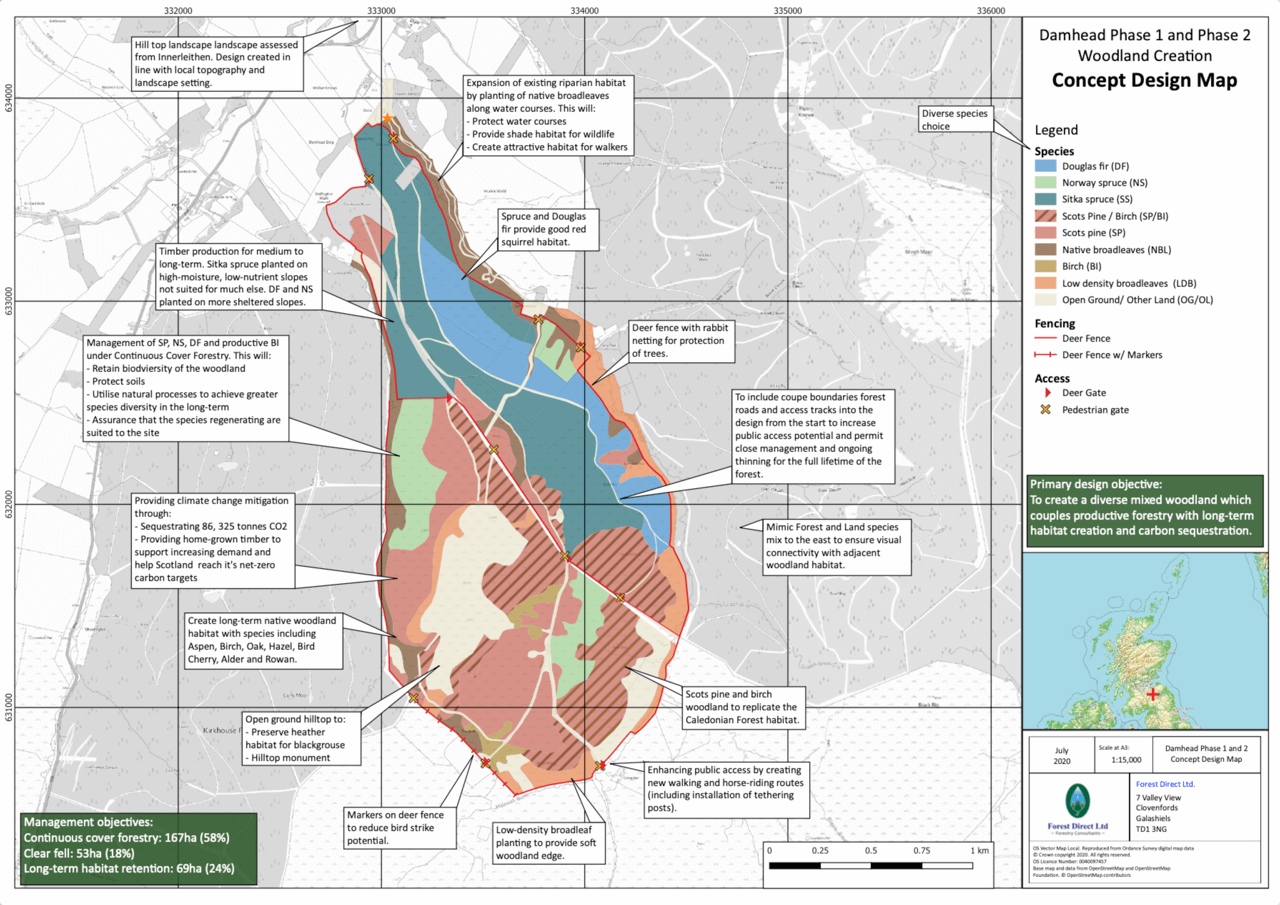Objective
The Trust wanted to play its part in the creation of a low carbon economy, securing the sustainable future of the Estate, through the creation of diverse woodlands that are productive and can be enjoyed by future generations.
Vision
“To produce a highly diverse mixed woodland which coupled habitat creation and carbon sequestration with productive forestry to deliver a sustainable woodland ecosystem.”
Fast Facts
Client: Traquair House Charitable Trust
Project developer: Forest Direct Ltd
Previous land use: Unimproved Agricultural grazing land
Area: Gross 300ha; Planted 275ha; Open 25ha
Species Mix:
Scots pine/Scots pine mixed with Birch and Aspen – 108.2ha (37%)
Sitka spruce – 61.64ha (20%)
Douglas Fir – 29.89ha (10%)
Norway spruce – 23.45 ha (8%)
Native broadleaves 26.87ha (9%)
Low-density native broadleaves 23.23 ha (8%)
Open ground 22.77 ha (8%)
Trees planted: 650,000
Woodland Management:
Mixed continuous cover (57%)
Mixed productive woodland, thinned & managed for clear-fell (18%)
Managed for long-term habitat (25%)
Estimated net carbon Sequestration (tCO2): 68,207
Start date: November 2019
End date: Feb 2021

Approach
The commercial forestry element utilised lower-lying, lower-grade agricultural land to provide high-quality, home-grown timber. This added to the natural timber resource for Scotland’s growing demands, assisted Scotland’s transition towards a Green Economy and provided a long-term investment for the owner.
The woodland mixture included over 80ha of Scots Pine, Birch and Aspen which replicated the Caledonian Forest habitat. Approximately 60% of the new woodland will be managed as Continuous Cover Forestry (CCF) providing a long-term uneven aged forest structure with low impact silvicultural practices.
Over 25% of the site was designed for long-term habitat retention; to achieve this, we planted native broadleaved trees and designed open ground in the scheme to deliver against the woodland framework.
The woodland design was led by soil conditions, topography and the existing biodiversity to sympathetically The woodland design was led by soil conditions, topography and the existing biodiversity to sympathetically create a woodland with multiple benefits. These include protecting and increasing existing fauna and flora habitats, expanding the riparian habitat, which will safeguard watercourses, reduce stormwater flows and provide shade habitat. The scheme also creates extensive recreational routes for walking, horse riding and mountain biking, providing a visually attractive forest and creating employment in the local economy.
The scale of the forest will play a significant role in removing Greenhouse Gases from the atmosphere. Nearly 650,000 trees in the new woodland will contribute to the battle against Climate Change by sequestering over 68,000 tonnes of carbon over the next 50 years.










